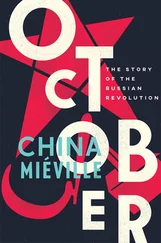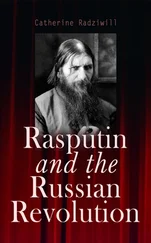THE RUSSIAN REVOLUTION
History in an Hour
Rupert Colley

About History in an Hour About History in an Hour Introduction Emancipation Nicholas II: The Last Tsar The 1905 Russian Revolution The October Manifesto War February Revolution The Provisional Government The October Revolution Civil War Red Terror ‘Lenin lived, Lenin lives, and Lenin will live’ Appendix 1: Key Players Appendix 2: Timeline of the Russian Revolution Copyright Got Another Hour? About the Publisher Note on dates Until January 1918, Russia used the ‘Old Style’ Julian Calendar that before 1900 was 12 days behind our Gregorian calendar, and after 1900, 13 days behind. This text uses the New Style throughout.
History in an Hour is a series of ebooks to help the reader learn the basic facts of a given subject area. Everything you need to know is presented in a straightforward narrative and in chronological order. No embedded links to divert your attention, nor a daunting book of 600 pages with a 35-page introduction. Just straight in, to the point, sixty minutes, done. Then, having absorbed the basics, you may feel inspired to explore further.
Give yourself sixty minutes and see what you can learn …
To find out more visit http://historyinanhour.com or follow us on Twitter: http://twitter.com/historyinanhour
Contents
Cover
Title Page THE RUSSIAN REVOLUTION History in an Hour Rupert Colley
About History in an Hour About History in an Hour About History in an Hour Introduction Emancipation Nicholas II: The Last Tsar The 1905 Russian Revolution The October Manifesto War February Revolution The Provisional Government The October Revolution Civil War Red Terror ‘Lenin lived, Lenin lives, and Lenin will live’ Appendix 1: Key Players Appendix 2: Timeline of the Russian Revolution Copyright Got Another Hour? About the Publisher Note on dates Until January 1918, Russia used the ‘Old Style’ Julian Calendar that before 1900 was 12 days behind our Gregorian calendar, and after 1900, 13 days behind. This text uses the New Style throughout. History in an Hour is a series of ebooks to help the reader learn the basic facts of a given subject area. Everything you need to know is presented in a straightforward narrative and in chronological order. No embedded links to divert your attention, nor a daunting book of 600 pages with a 35-page introduction. Just straight in, to the point, sixty minutes, done. Then, having absorbed the basics, you may feel inspired to explore further. Give yourself sixty minutes and see what you can learn … To find out more visit http://historyinanhour.com or follow us on Twitter: http://twitter.com/historyinanhour
Introduction Introduction The communist system unleashed by the Russian Revolution of 1917 was the greatest political experiment ever conducted. The Revolution promised freedom from the shackles of Imperialism, corruption and exploitation but until its collapse in 1991, the peoples of the vast Soviet empire endured seventy years of misguided socialism and totalitarianism. The last Russian Tsar, Nicholas II, ruled over a vast empire that was backward, impoverished and in some respects largely resentful of his autocratic rule. Its people demanded reform and change. The effects of the outbreak of war in 1914 finally, in March 1917, brought down the Tsar and the 300-year-old Romanov dynasty. The Provisional Government that replaced the Tsar proved equally ineffectual at addressing the needs of Russia’s major problems. Only the representatives of the workers, or ‘Soviets’, seemed to understand the problems that lay at the heart of the empire. From the various Soviet parties it was the Bolshevik Party and its leader, Vladimir Lenin, that seized power and established the Soviet Union with its promises of a new socialist utopia. The consequences shaped the entire twentieth century and their ramifications were felt across the world. This, in an hour, is the Russian Revolution.
Emancipation
Nicholas II: The Last Tsar
The 1905 Russian Revolution
The October Manifesto
War
February Revolution
The Provisional Government
The October Revolution
Civil War
Red Terror
‘Lenin lived, Lenin lives, and Lenin will live’
Appendix 1: Key Players
Appendix 2: Timeline of the Russian Revolution
Copyright
Got Another Hour?
About the Publisher
Note on dates
Until January 1918, Russia used the ‘Old Style’ Julian Calendar that before 1900 was 12 days behind our Gregorian calendar, and after 1900, 13 days behind. This text uses the New Style throughout.
Introduction
The communist system unleashed by the Russian Revolution of 1917 was the greatest political experiment ever conducted. The Revolution promised freedom from the shackles of Imperialism, corruption and exploitation but until its collapse in 1991, the peoples of the vast Soviet empire endured seventy years of misguided socialism and totalitarianism.
The last Russian Tsar, Nicholas II, ruled over a vast empire that was backward, impoverished and in some respects largely resentful of his autocratic rule. Its people demanded reform and change. The effects of the outbreak of war in 1914 finally, in March 1917, brought down the Tsar and the 300-year-old Romanov dynasty.
The Provisional Government that replaced the Tsar proved equally ineffectual at addressing the needs of Russia’s major problems. Only the representatives of the workers, or ‘Soviets’, seemed to understand the problems that lay at the heart of the empire. From the various Soviet parties it was the Bolshevik Party and its leader, Vladimir Lenin, that seized power and established the Soviet Union with its promises of a new socialist utopia. The consequences shaped the entire twentieth century and their ramifications were felt across the world.
This, in an hour, is the Russian Revolution.
Emancipation
On 3 March 1861, Alexander II issued what seemed on the face of it the most revolutionary reform in Russia’s history – his ‘Manifesto on the Emancipation of the Serfs’. The edict freed 23 million serfs from their bondage to landowners, and wrested ownership of 85 per cent of Russia’s land from private landowners in favour of the peasants. The landlords, understandably, opposed such a sweeping change but were told by the Tsar, ‘It is better to abolish serfdom from above than to wait for the time when it will begin to abolish itself from below.’
Alexander II, c.1870
The high ideals of Alexander II’s emancipation of the serfs fell very short of its ambition. Landowners held onto 15 per cent of the land and this was, invariably, the best land; while peasants had to buy back their land from the nobles, usually at an inflated price. The majority were, inevitably, unable to afford the cost, and were offered a loan by the government, repayable at 6 per cent over forty-nine years. The peasant, freed from serfdom, was no better off and no happier.
Twenty years later, on 13 March 1881, a group calling themselves the People’s Will threw a bomb at the Tsar’s carriage in St Petersburg, fatally wounding Alexander II. The Tsar’s son (Alexander III) and twelve-year-old grandson (Nicholas II) were witness to Alexander’s violent end. As future tsars they never forgot.
Ironically, Alexander II had, just hours before his death, put his signature to a draft decree to establish a parliament, a Duma, the first step towards a constitutional monarchy. He knew that the emancipation of the serfs had failed, and that his reforms, though laudable, merely created demand for greater reform. Thus, by their very action, the terrorists had unwittingly aborted any chance of constitutional reform. Instead, they got a new Tsar, Alexander’s son, Alexander III, who immediately tore up his father’s parliamentary proposal, undid his reforms and intensified the level of repression.
Читать дальше













